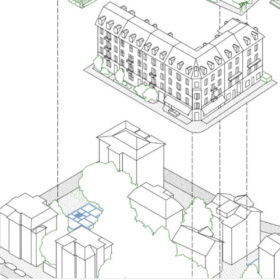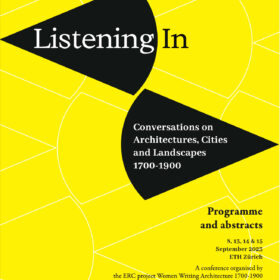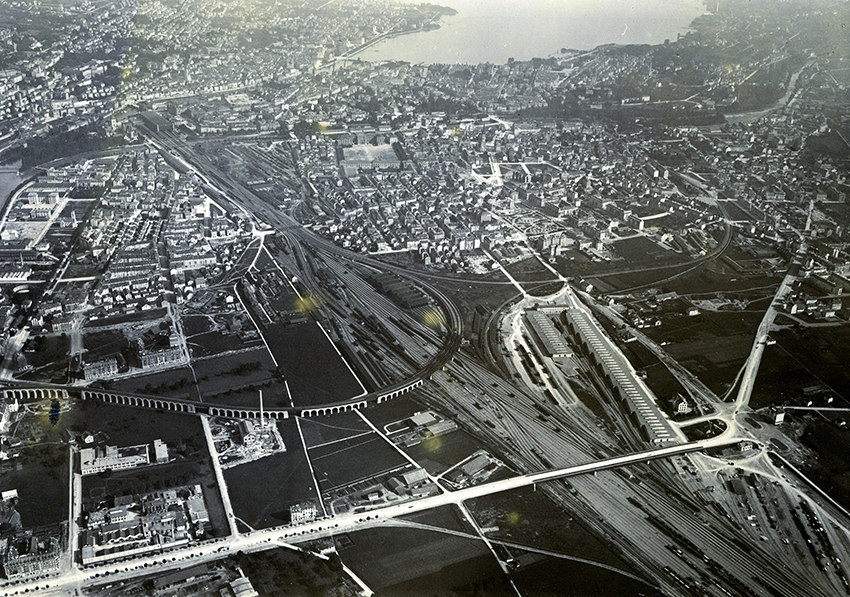
The city of Zurich is a testament to the incredible power of urban codes and their influence on urban form. From the mid-nineteenth onwards, these codes, such as building laws, norms, standards, or even municipal constitutions, shaped and reshaped the city into what it is today. The research project ’City of Codes’ explores how these urban codes, though often highly technical in nature, can be understood as a ‘hidden project’ for the city.
A ‘Hidden Project’ for the City
Zurich is a growing city and will need to accommodate ten thousand new inhabitants in the coming decades. However, this urban growth scenario seems at odds with a set of changes during the past decades: people use ever more dwelling space; private cars have become the primary consumers of open space, and vast areas in the inner city have been reserved for working. Many of these developments have been enhanced by, or are the result of, specific urban policies and codes. Though not so apparent as plans by architects and urban designers, these codes – often written by policymakers, lawyers, or government officials – can be considered a ‘hidden project’ for the city: determining the appearance of the city and the way people reside in it. This research project explores these complex relations between urban codes and urban form that have constituted the cityscape of Zurich from the latter half of the nineteenth century until today.
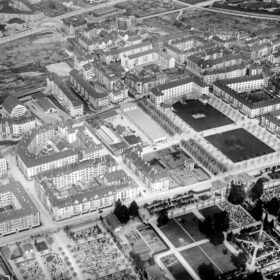
On the Relation of Urban Codes and Urban Form
Though urban codes have a rich history of actively governing the urbanisation processes, they are often presented as reactions to the practical challenges of urban growth or transformation. Rendered manifest in rules and regulations of various nature, such as building laws, fire ordinances, or material specifications, urban codes also express cultural, social, and economic values and patterns. Hence, urban codes not only contribute to the determination of the formal and technical characteristics of Zurich’s urban fabric but also convey specific cultural, social, and economic conceptions of how the city is understood, envisioned, constructed, and lived. This research project holds that urban codes, either directly or indirectly, are the articulation of particular ideas about housing, transportation, the role of green spaces in the city, the relation between public and private realms, or the combination of work, commercial and residential spaces. Accordingly, the accumulation of urban codes defines a strong but implicit urban project that intersects with the visions of the city contained in the projects and plans of architects and urban designers. While extensively discussed in the social sciences and law, the dense entanglements between urban codes and urban form are, until today, considered largely external to the practices of architecture and urban design. They are also overlooked in canonical urban and architectural historiography. Against this background, this research project posits an alternative understanding and sheds light on the central role of urban codes in the production of the city.
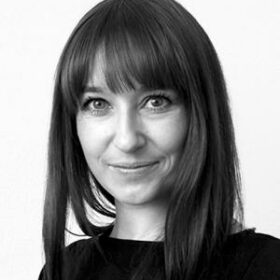 Sanna Kattenbeck, architect MSc, MAS ETH gta, studied architecture at the Brandenburg University of Technology and as a Jasso scholarship holder in the Momoyo Kaijima Studio at the Institute of Art and Design at the University of Tsukuba in Japan. After completing her Master’s degree, she worked in Bern, Lucerne and Zurich architectural offices. She graduated in autumn 2021 with a Master of Advanced Studies in the History and Theory of Architecture at the gta Institute of the ETH Zurich. As part of the MAS programme, she was actively involved in the exhibition project «Cooperative Conditions. A Primer on Architecture, Finance and Regulation in Zurich» for the Venice Architecture Biennale 2021 and contributed to teaching the MAS programme as a research assistant. In October 2021, Sanna started her Doctorate at the Chair of The History and Theory of Urban Design under the supervision of Prof. Dr. Tom Avermaete and PD. Dr. Irina Davidovici as part of the SNSF-funded project «Codes and Conventions for the Future of Zurich: A Propositional Planning Approach to Qualitative Densification» in collaboration with Prof. Jonathan Sergison (USI, Accademia di Mendrisio) and is currently teaching a «Focus Work/Vertiefungsarbeit» Course.
Sanna Kattenbeck, architect MSc, MAS ETH gta, studied architecture at the Brandenburg University of Technology and as a Jasso scholarship holder in the Momoyo Kaijima Studio at the Institute of Art and Design at the University of Tsukuba in Japan. After completing her Master’s degree, she worked in Bern, Lucerne and Zurich architectural offices. She graduated in autumn 2021 with a Master of Advanced Studies in the History and Theory of Architecture at the gta Institute of the ETH Zurich. As part of the MAS programme, she was actively involved in the exhibition project «Cooperative Conditions. A Primer on Architecture, Finance and Regulation in Zurich» for the Venice Architecture Biennale 2021 and contributed to teaching the MAS programme as a research assistant. In October 2021, Sanna started her Doctorate at the Chair of The History and Theory of Urban Design under the supervision of Prof. Dr. Tom Avermaete and PD. Dr. Irina Davidovici as part of the SNSF-funded project «Codes and Conventions for the Future of Zurich: A Propositional Planning Approach to Qualitative Densification» in collaboration with Prof. Jonathan Sergison (USI, Accademia di Mendrisio) and is currently teaching a «Focus Work/Vertiefungsarbeit» Course.
